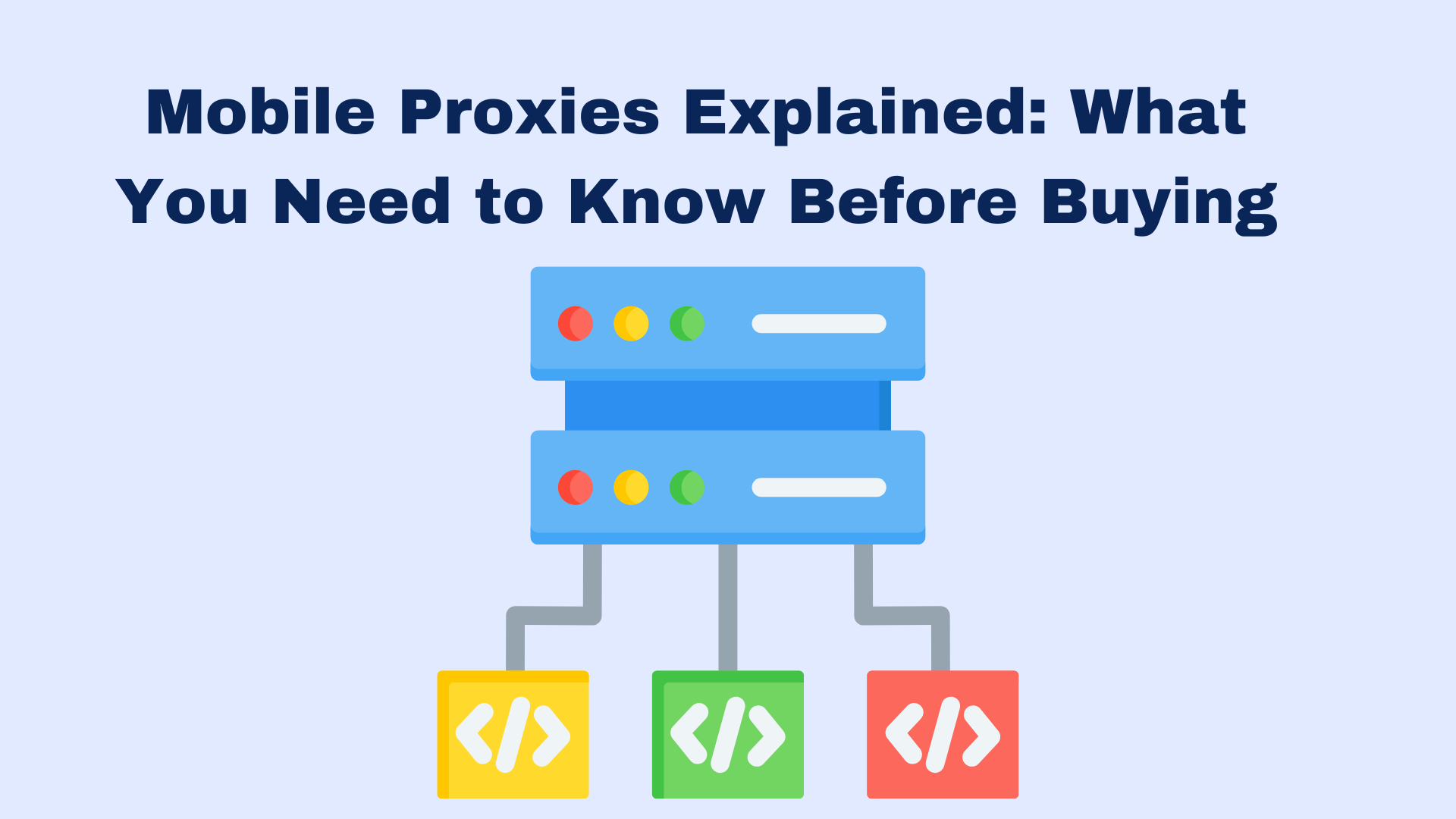With the ever-growing emphasis on digital privacy, cybersecurity, and access to unrestricted content, mobile proxies have become an essential tool for businesses and individuals alike. Mobile proxies, which use real IP addresses from mobile networks, provide an effective way to maintain anonymity, avoid IP bans, and access geo-restricted content. However, to make the most out of mobile proxies, it’s essential to use them correctly and strategically. This guide will cover the best practices for using mobile proxies in 2024, ensuring security, efficiency, and compliance.
Understanding Mobile Proxies
Mobile proxies route your internet traffic through mobile devices connected to a cellular network (3G, 4G, or 5G). Unlike data center proxies, which use IP addresses from servers, mobile proxies provide real mobile IPs assigned by cellular carriers. This makes them appear as genuine user traffic and reduces the likelihood of being flagged or banned by websites.
Best Practices for Using Mobile Proxies
- Choose a Reputable Mobile Proxy Provider
- Select a provider with a large pool of mobile IP addresses from multiple locations. This ensures better IP rotation and lowers the risk of IP bans.
- Ensure the provider offers secure authentication methods, such as IP whitelisting and userauthentication.
- Check for reliable customer support and a strong reputation in the industry to avoid issues that can arise from poor-quality proxies.
- Use Rotating Mobile Proxies for High Anonymity
- Rotating proxies change IP addresses periodically, which adds a layer of anonymity and reduces the risk of IP bans. This is particularly useful for activities like web scraping, social media automation, and accessing geo-restricted content.
- Configure the rotation settings according to the nature of your tasks. For example, set shorter rotation intervals for high-frequency scraping tasks to minimize the chance of detection.
- Limit Requests and Maintain Natural Traffic Patterns
- Avoid overloading mobile proxies with excessive requests. Sending too many requests in a short period can raise red flags and result in IP bans.
- Mimic human-like browsing behavior by varying the request intervals, browsing patterns, and time of day. This is crucial for activities like SEO monitoring and social media management.
- Monitor and Optimize Proxy Performance
- Regularly monitor the performance of your mobile proxies, including connection speed, latency, and success rates. This helps you identify any issues early and adjust your proxy settings or switch providers if necessary.
- Use proxy management tools that provide real-time analytics to track performance and make data-driven decisions.
- Implement Strong Security Measures
- Ensure that all communications are encrypted using HTTPS or other secure protocols. This is especially important when handling sensitive data or performing transactions.
- Use two-factor authentication (2FA) and strong passwords for accounts associated with your proxy provider to protect against unauthorized access.
- Stay Compliant with Legal and Ethical Standards
- Understand the legal implications of using mobile proxies in your region and the regions you are targeting. Some countries have strict regulations regarding proxy use, and non-compliance could lead to legal issues.
- Use proxies ethically, especially for activities like data scraping. Always comply with the terms of service of the websites you are scraping and avoid scraping personal or sensitive information.
- Use Mobile Proxies for Specific Use Cases
- Web Scraping and Data Collection: Use mobile proxies to scrape websites that are sensitive to IP bans. Rotating mobile IPs can help bypass anti-scraping measures without being detected.
- Social Media Management: Manage multiple social media accounts without risking bans by using mobile proxies that mimic real user behavior.
- Ad Verification: Ensure that ads are displayed correctly in different regions without being manipulated by malicious actors by using mobile proxies to simulate users from those locations.
- SEO Monitoring: Conduct accurate SEO monitoring and SERP analysis from different locations using mobile proxies to avoid triggering search engine anti-bot systems.
- Optimize Bandwidth Usage
- Monitor your bandwidth usage carefully, especially if your mobile proxy provider charges based on bandwidth consumption. Optimize your scraping scripts and automation tools to minimize unnecessary data transfer.
- Use lightweight browsing options and avoid downloading large files unless absolutely necessary to reduce bandwidth usage and costs.
- Regularly Update Proxy Settings and Scripts
- Keep your proxy settings and scraping scripts up to date to adapt to any changes in website structures or anti-scraping measures.
- Stay informed about new developments in proxy technology and update your strategies accordingly to maintain high efficiency and low risk.
- Test Proxies Before Large-Scale Use
- Before deploying proxies on a large scale, test them on a smaller scale to ensure they perform well and do not get flagged or blocked. This is particularly important for high-stakes tasks like ad verification and competitive analysis.



